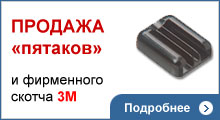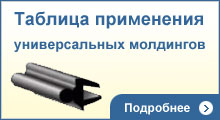| АВТОСТЕКЛА: продажа автостекол, доставка и установка автостекол в Москве |
в мире автостекол
| Email для связи: |
НОВЫЕ ПОСТУПЛЕНИЯ Скотч прозрачный на акриловой основе (D-31х1,5мм) для линз датчиков дождя/света от компании 3М. 136 моделей 
220 руб.
СПЕЦ. ПРЕДЛОЖЕНИЕ Силиконовые пластины для датчиков дождя/света в ассортименте. Обзорная информация 
0 руб.
А ЗНАЕТЕ ЛИ ВЫ, ЧТО... Если "старый" датчик дождя наполняется при его переустановке гелем на силиконовой основе (из шприца), то повторная калибровка (инициализация) датчика при этом не нужна.
|
Kia Sorento 20112011 Kia Sorento.Windshield and back glass removal and replacement instructions
 Vehicle type: Four-door utility vehicle NAGS numbers*: Windshield part numbers FW3170 solar and FW3171 solar, heated wiper park; back glass part number FB24481 solar, heated Watch for: The back glass edge is entirely exposed. The top and sides appear to be far enough away from the wall of the pinchweld to allow for cutout using a cold knife, but the bottom is very tight. A. Windshield 2. Drape the fender with a fender cover and tape up any vulnerable areas on the vehicle to protect against possible damage. Tape up the defroster vents to prevent debris from falling into the openings. 3. To remove the rearview mirror, loosen the 25T Torx set screw in the mirror base and slide the mirror off the pad. 4. Remove the rubberized windshield-wiper nut covers. 5. Remove the windshield-wiper nuts using a 14-millimeter wrench or socket. 6. Remove the uniquely shaped and marked wipers from the wiper posts. 7. Remove the six retainers on the leading edge of the cowl panel by pushing down the center of the retainer and then lifting out the base of the retainer. Release the fender wings from under the fenders’ edge and release the underside retainers. Remove the panel and set in a safe place. 8. The A-pillar moldings are clipped down. There are four clips attached to the pinchweld wall. To release the molding, pry it upward using a pry tool or molding release tool. Note, the A-pillar moldings are separated at the top of the pillar. 9. The top molding is a PAAS-type underside molding and will come attached to the new glass. 10. For this installation, the vehicle did not have a heated wiper park area; however, prior model-year Sorentos had the wiring harness disconnect through the speaker opening at the top of the dashboard. Note: Before beginning windshield removal, verify the new windshield is the correct one and the urethanes and primers are current. Never use outdated products as this could jeopardize the structural integrity of the vehicle and the safety of its passengers. Removal 12. Before cutting out the windshield, remove contaminants from the glass and pinchweld to prevent contact with the urethane. 13. Tape up the vehicle body around the perimeter of the glass to avoid damaging the paint during cutout. 14. Use the cutting tools of your choice to remove the glass from the adhesive bead. Be careful not to hit or cut the gravity stops; mark their location with a marking pencil or retention molding tape. If you use a power tool, lubricate the cutting area with water. Spray the top and sides; then make your cuts. 15. Take the windshield out of the opening using vacuum cups. Make sure the vacuum cups do not overlap a crack in the glass. Lift the glass and place it on a windshield stand or suitable workstation. Installation 17. Dry fit the new glass to the opening. Mark your glass using a grease pencil or retention molding tape. 18. Place your vacuum cups on the new windshield in the appropriate location. 19. Set the windshield onto the old urethane. 20. With the windshield resting in the opening, make sure it is in the right spot. 21. Adjust both sides to the correct setting, marking the passenger side, then the driver side. Lift the glass and place it on a windshield stand or suitable workstation. 22. Follow the urethane manufacturer’s recommendations for installation. 23. Clean the inside of the windshield using a urethane manufacturer-recommended product. Do not touch the bonding area of the windshield after cleaning, prepping or priming it. 24. Wear powder-free Nitrile gloves to protect against harsh chemicals. 25. Apply the glass prep and primer following the urethane manufacturer’s recommendations. 26. Using the tool of your choice, remove the original urethane bead, leaving 1 mm-2 mm of urethane on the pinchweld. Make sure there are no contaminants and do not touch the pinchweld after prepping the area. 27. Apply the pinchweld primer only to the areas where needed, and follow the urethane manufacturer’s recommendations. Allow preps and primers to dry as recommended by the urethane manufacturer. 28. Apply a triangular bead of urethane to the same path as the freshly cut urethane on the pinchweld. Before cutting your V-notch, cut the tip off of your nozzle with a nozzle-cutter. With the cut nozzle, measure to the top of the roofline, and at 1/16-inch higher than the roofline, make a mark on the nozzle with a pen or marker. Notch the nozzle up to the marked line; this will give you the appropriate triangular bead. 29. Lift the windshield from the windshield stand or workstation using vacuum cups. Set the windshield on the urethane at the mark you made during your dry fit. Lower the driver’s side of the windshield onto the urethane and line it up with the dry-fit mark; it is now in place. 30. The windshield is now ready to be decked. Press firmly to ensure a good seal. 31. Before re-installing the parts, check for leaks. Use a leak detector to go over the perimeter of the windshield. If you find a leak, apply more pressure or add more urethane to the spot and ensure that the glass makes contact with the wet urethane. 32. Re-install the removed parts in reverse order. 33. Allow the urethane to cure according to the urethane manufacturer’s recommended cure time before returning the vehicle to the customer. Warning: Disregarding the safe drive-away time that your urethane manufacturer recommends could jeopardize the structural integrity of the vehicle and the safety of its passengers. 34. You have completed the removal and replacement of the windshield. B. Back glass 2. Remove the base of the wiper cover. Remove the 12-mm nut underneath. Remove the wiper arm and set it aside. 3. Remove the interior garnish moldings on the top and two sides to allow for easy disconnecting of the defroster wiring harnesses. 4. The back glass edge is entirely exposed. The top and sides appear to be far enough away from the wall of the pinchweld to allow for cutout using a cold knife, but the bottom is very tight. 5. Cut out the back glass using the tools of your choice. If you use a power tool, lubricate the cutting area with water. Spray the top and sides; then make your cuts. Installation 7. Dry fit the new glass to the opening. Mark your glass using a grease pencil or retention molding tape. 8. Place your vacuum cups on the new back glass in the appropriate location. 9. Set the glass onto the old urethane. 10. With the glass resting in the opening, make sure it is in the right spot. 11. Adjust both sides to the correct setting. Lift the glass and place it on a windshield stand or suitable workstation. 12. Follow the urethane manufacturer’s recommendations for installation. 13. Clean the inside of the glass using a urethane manufacturer-recommended product. Do not touch the bonding area of the back glass after cleaning, prepping or priming it. 14. Wear powder-free Nitrile gloves to protect against harsh chemicals. 15. Apply the glass prep and primer following the urethane manufacturer’s recommendations. 16. Using a pinchweld scraper, remove as much of the original urethane bead as the urethane manufacturer recommends. Make sure there are no contaminants and do not touch the pinchweld after prepping the area. 17. Apply the pinchweld primer only to the areas where needed, and follow the urethane manufacturer’s recommendations. If scratches occur during cutout outside of the bonding area, take care not to prime where it will be visible. It may be necessary to use touch-up paint instead of pinchweld primer. Allow preps and primers to dry as recommended by the urethane manufacturer. 18. Apply a triangular bead of urethane to the same path as the freshly cut urethane on the pinchweld. Before cutting your V-notch, cut the tip off of your nozzle with a nozzle-cutter. With the cut nozzle, measure to the top of the roofline, and at 1/16-inch higher than the roofline, make a mark on the nozzle with a pen or marker. Notch the nozzle up to the marked line; this will give you the appropriate triangular bead. 19. Lift the back glass from the windshield stand or workstation using vacuum cups. Set the glass on the urethane at the mark you made during your dry fit. Line it up with the dry-fit marks; it is now in place. 20. The back glass is now ready to be decked. Press firmly to ensure a good seal. 21. Before re-installing the parts, check for leaks. Use a leak detector to go over the perimeter of the glass. If you find a leak, apply more pressure or add more urethane to the spot and ensure that the glass makes contact with the wet urethane. 22. Re-install the removed parts in reverse order. 23. Check operation of the back glass by opening and closing it several times. 24. Allow the urethane to cure according to the urethane manufacturer’s recommended cure time before returning the vehicle to the customer. 25. You have completed the removal and replacement of the back glass.
By Bob Beranek |






